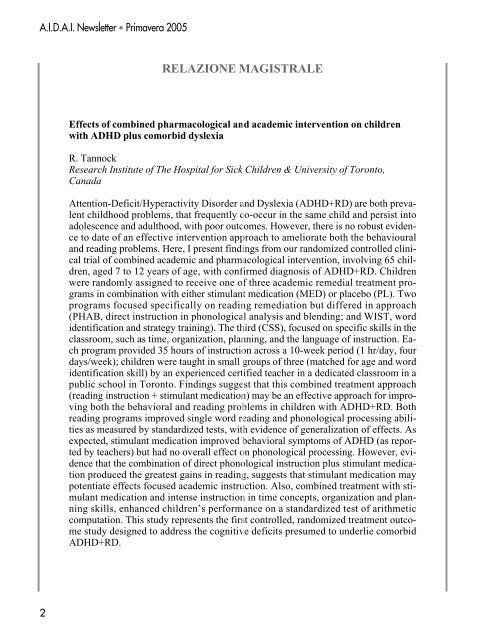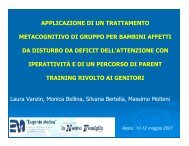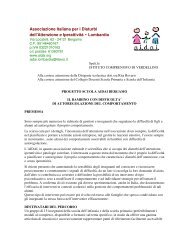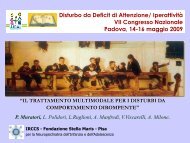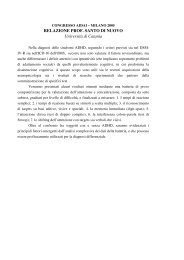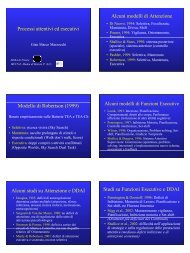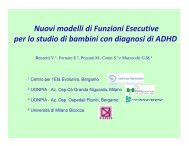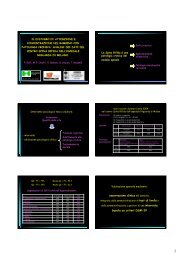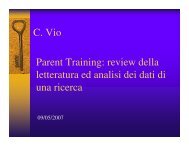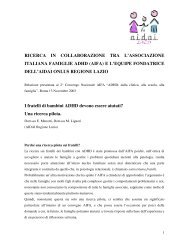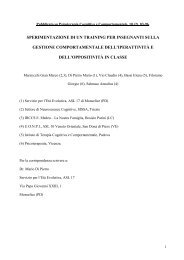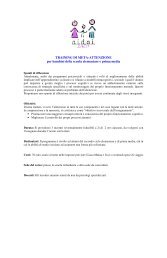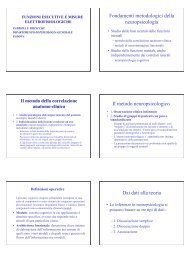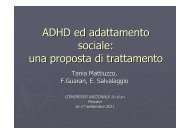You also want an ePaper? Increase the reach of your titles
YUMPU automatically turns print PDFs into web optimized ePapers that Google loves.
A.I.D.A.I. Newsletter • Primavera 2005RELAZIONE MAGISTRALEEffects of combined pharmacological and academic intervention on childrenwith ADHD plus comorbid dyslexiaR. TannockResearch Institute of The Hospital for Sick Children & University of Toronto,CanadaAttention-Deficit/Hyperactivity Disorder and Dyslexia (ADHD+RD) are both prevalentchildhood problems, that frequently co-occur in the same child and persist intoadolescence and adulthood, with poor outcomes. However, there is no robust evidenceto date of an effective intervention approach to ameliorate both the behaviouraland reading problems. Here, I present findings from our randomized controlled clinicaltrial of combined academic and pharmacological intervention, involving 65 children,aged 7 to 12 years of age, with confirmed diagnosis of ADHD+RD. Childrenwere randomly assigned to receive one of three academic remedial treatment programsin combination with either stimulant medication (MED) or placebo (PL). Twoprograms focused specifically on reading remediation but differed in approach(PHAB, direct instruction in phonological analysis and blending; and WIST, wordidentification and strategy training). The third (CSS), focused on specific skills in theclassroom, such as time, organization, planning, and the language of instruction. Eachprogram provided 35 hours of instruction across a 10-week period (1 hr/day, fourdays/week); children were taught in small groups of three (matched for age and wordidentification skill) by an experienced certified teacher in a dedicated classroom in apublic school in Toronto. Findings suggest that this combined treatment approach(reading instruction + stimulant medication) may be an effective approach for improvingboth the behavioral and reading problems in children with ADHD+RD. Bothreading programs improved single word reading and phonological processing abilitiesas measured by standardized tests, with evidence of generalization of effects. Asexpected, stimulant medication improved behavioral symptoms of ADHD (as reportedby teachers) but had no overall effect on phonological processing. However, evidencethat the combination of direct phonological instruction plus stimulant medicationproduced the greatest gains in reading, suggests that stimulant medication maypotentiate effects focused academic instruction. Also, combined treatment with stimulantmedication and intense instruction in time concepts, organization and planningskills, enhanced children’s performance on a standardized test of arithmeticcomputation. This study represents the first controlled, randomized treatment outcomestudy designed to address the cognitive deficits presumed to underlie comorbidADHD+RD.2


